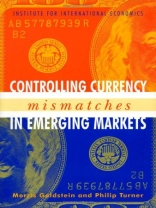In most of the currency crises of the 1990s, the largest output falls have occurred in those emerging economies with large currency mismatches, a phenomenon that occurs when assets and liabilities are denominated in different currencies such that net worth is sensitive to changes in the exchange rate. Currency mismatching makes crisis management much more difficult since it constrains the willingness of the monetary authority to reduce interest rates in a recession (for fear of initiating a large fall in the currency that would bring with it large-scale insolvencies). The mismatching also produces a ‘fear of floating’ on the part of emerging economies, sometimes inducing them to make currency-regime choices that are not in their own long-term interest. Morris Goldstein and Philip Turner summarize what is known about the origins of currency mismatching in emerging economies, discuss how best to define and measure currency mismatching, and review policy options for reducing the size of the problem.
A propos de l’auteur
Morris Goldstein, nonresident senior fellow, has held several senior staff positions at the International Monetary Fund (1970–94), including Deputy Director of its Research Department (1987–94). From 1994 to 2010, he held the Dennis Weatherstone Senior Fellow position at the Peterson Institute. He has written extensively on international economic policy and on international capital markets.Philip Turner is Deputy Head of the Monetary and Economic Department of the Bank for International Settlements, which he joined in 1989. Between 1976 and 1989, he held various positions, including head of division in the Economics Department at the OECD in Paris. In 1985-86, he was a visiting scholar at the Bank of Japan’s Institute for Monetary and Economic Studies in Tokyo.












